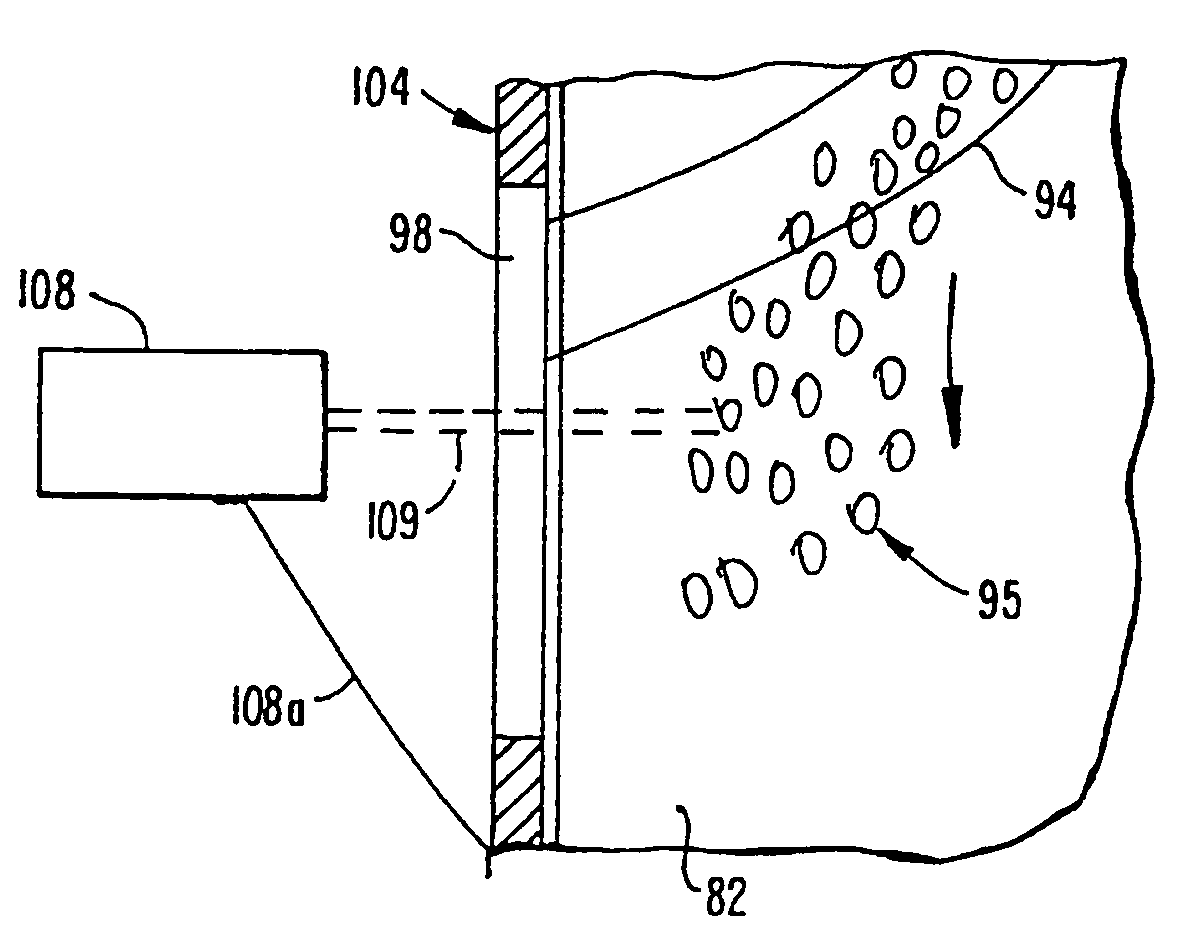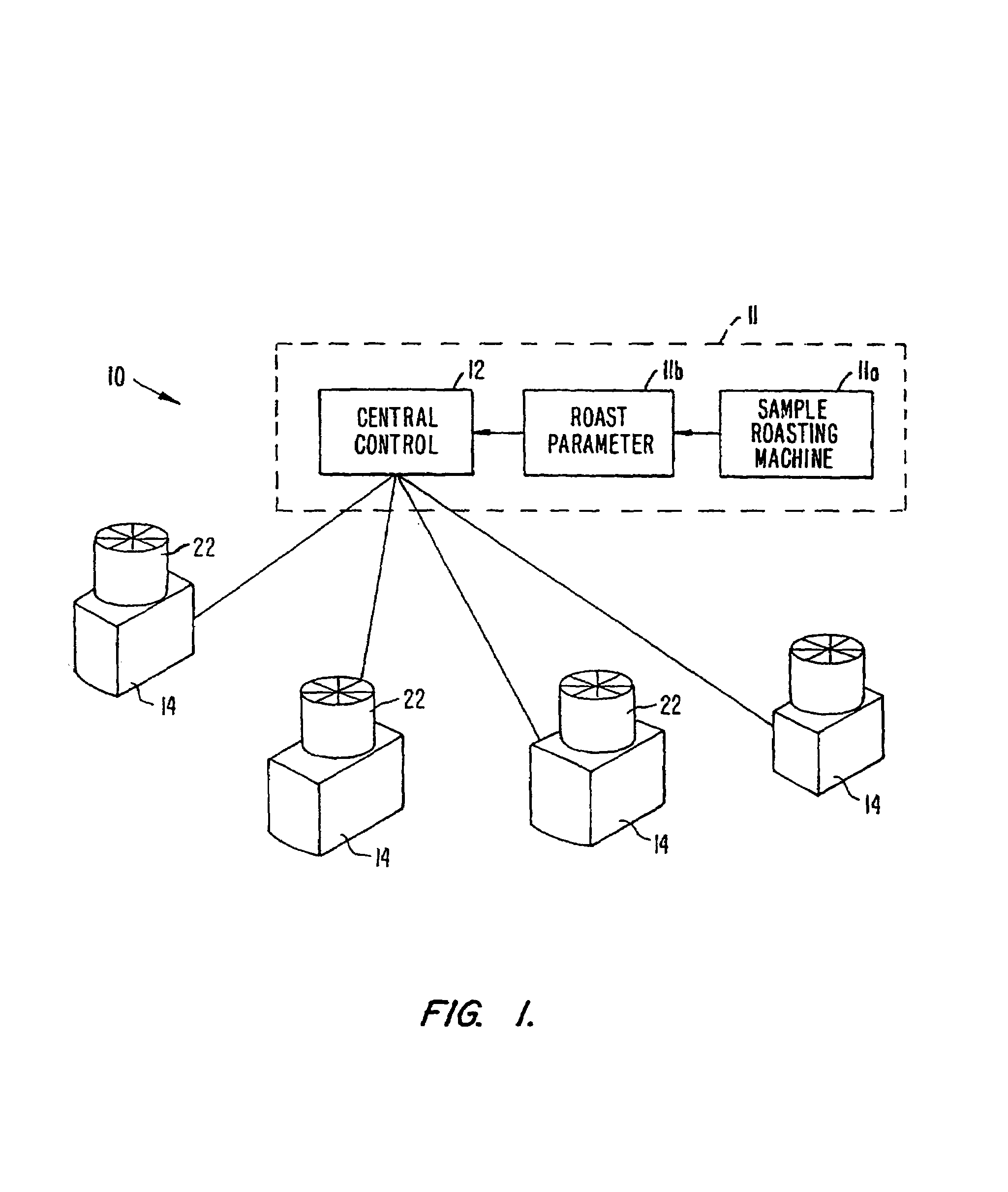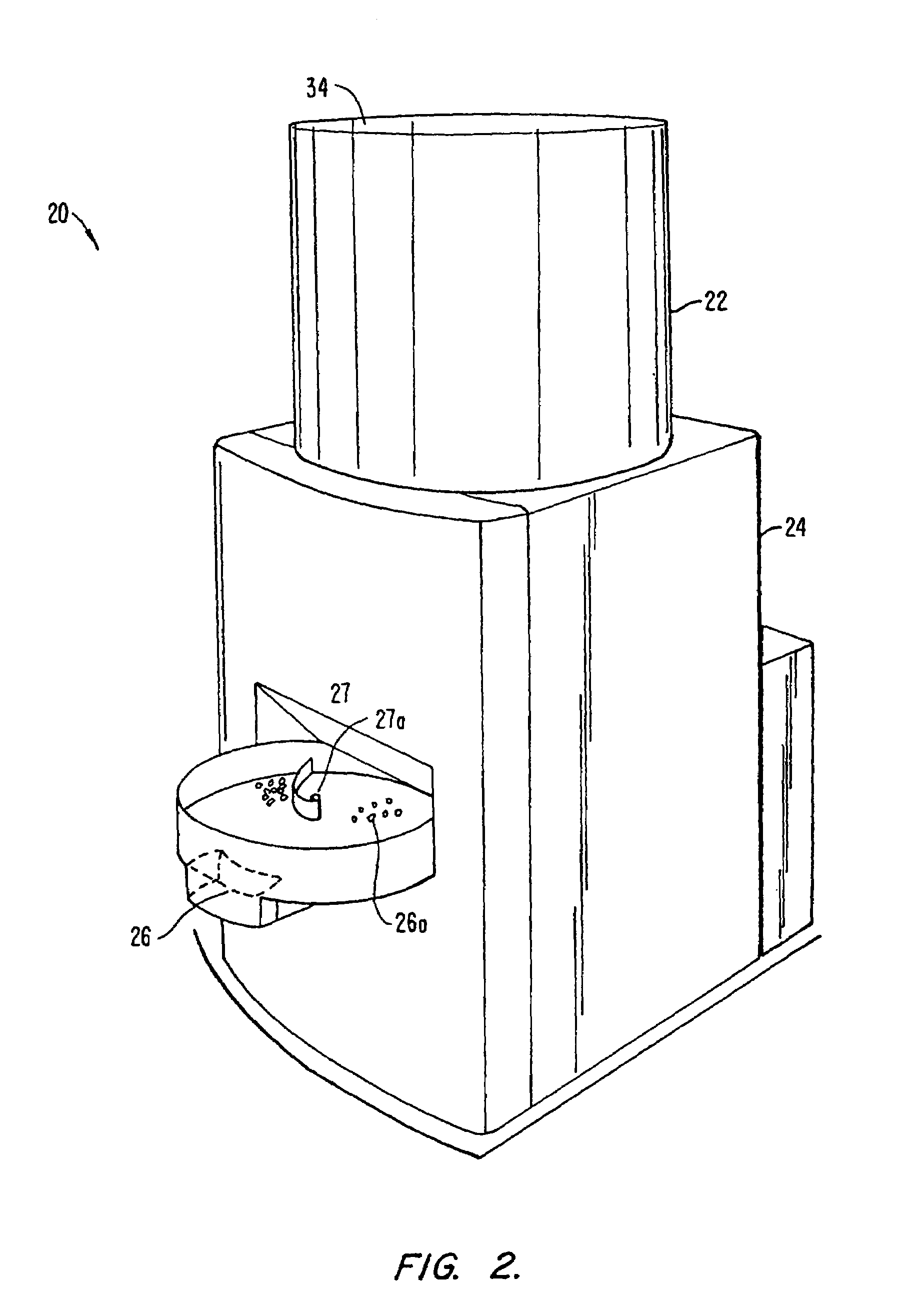[0016]A very important
advantage of the present invention is that it permits one to replicate roasting results by using the
darkness (or color) development
time line for the beans being roasted to control the roasting drum temperature on a real-time basis throughout the roasting process to thereby precisely replicate the development and final taste and
aroma profile of the beans. This is central to maintaining the consistency of the roasts and is not just a function of the final
darkness (or color) of the beans. How that darkness is attained also determines the final profile of the roasted product, e.g. the roasted beans, because the same darkness (or color) can be attained over a wide range of roasting times, which in turn depends on other parameters such as, for example, the roasting temperature. The profile of the roasted beans will vary greatly based on how the ultimate color was attained. For example, if beans are roasted too fast to attain a given darkness, the outside will be darker than the inside and the desired expansion of the bean will not be achieved, which impacts the profile of the roasted beans. Thus, the key to consistency in the profile is to roast the beans in the same way, time after time. This is accomplished with the reflectometer (or
spectrometer) and maintaining the preestablished darkness (or color) development
time line and parameters. In the past this was impractical, if not impossible, because there was no real-time color monitoring of the beans being roasted inside the roasting drum.
[0017]The roasting of beans for consumption (e.g. retail sale in stores or the
brewing of coffee in
espresso shops and the like) is conducted on site; for example in a store or an
espresso shop, with individual, self-contained
coffee roasting machines constructed in accordance with the invention. Each such roasting
machine is networked with a computer at the central control
station that has the necessary processors and memory to
record and store the roasting profiles / recipes and parameters needed for controlling and terminating the bean roasting.
[0018]The stored roasting parameters for each variety of beans to be shipped to the in-store machines are downloaded to the computer that forms part of the in-store roasting machine. Thereafter, the beans can be roasted with the in-store machine simply by activating it, and selecting the bean type and quantity and the desired darkness of roast. Drawing on the stored
recipe for the desired roast, the machine assures that the desired progression of the roast, as primarily determined from the change in darkness of the beans in real time, is adhered to. The roasting process continues until the beans being roasted match the stored darkness for that type of beans and finish. When the desired color has been reached, the beans are removed from the roasting machine and cooled, e.g. on a cooling tray.
[0019]Typically, coffee retailers wish to have a variety of different beans, at times including different extents to which a given type of beans is roasted to provide
flavor variations. For each bean type, the roasting parameters are established as is discussed above. In addition, if desired, different degrees of roasting for any one or all bean types can be established to provide a choice of finishes that is available for a given type of bean. All of the needed parameters are downloaded to each roasting machine, and the roasting parameters for the selected bean type are then used to control and terminate roasting when the selected finish for the chosen bean type has been reached.
[0020]The initially established roasting parameters can be downloaded as easily to one as to many, individual roasters. The automatic roasting method of the present invention is therefore ideally suited for use in a system that connects a central control
station with multiple individual, geographically separate roasters. Since each roaster will use the same parameters (color development over time) for controlling and terminating the roast, the roasted coffee beans will have a consistently uniform finish regardless where they are roasted and even though they are roasted without the supervision of a roastmaster.
[0021]Thus, one aspect of the present invention is a method of roasting coffee beans by initially establishing the varying degree over time to which the beans must be roasted to attain a desired finish during a sample roast. A measurable first parameter, which is indicative that the beans have been sufficiently roasted to yield the desired finish, is generated and stored. When a batch of
green coffee beans is to be roasted at one of the on-site roasting machines, the beans being roasted are monitored and a second parameter, which is compatible with the first parameter, is generated and compared with the first parameter. Upon detecting a match between the first and second parameters, which, for example, are signals indicative of the change in darkness of the sample roast (at the central control station) and the beans being roasted on-site, the roasting is discontinued. In addition, the progress of the roasting operation, and in particular the change in darkness or development of the beans during roasting, is monitored in real time and compared to the darkness change encountered during the sample roast. If, during a subsequent on-site production roast, the darkness (or color) development of the beans deviates from that recorded during the sample roast, other roasting parameters, such as the hot roasting
air temperature and / or the roasting air flow rate, are adjusted until the change in darkness corresponds to that established by the sample roast. This assures that the
coffee bean finish obtained during the sample roast and judged to be optimal for the bean is precisely replicated during each production roast on each of the individual roasting machines that form part of the overall system.
 Login to View More
Login to View More  Login to View More
Login to View More 


